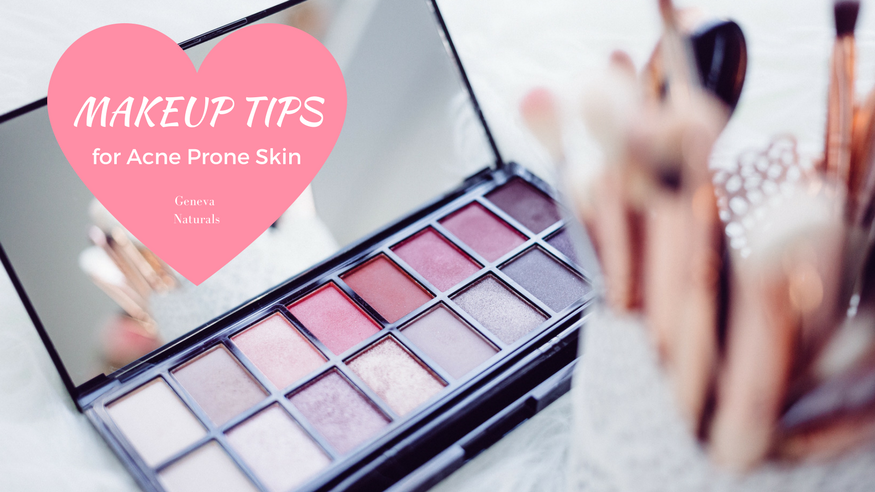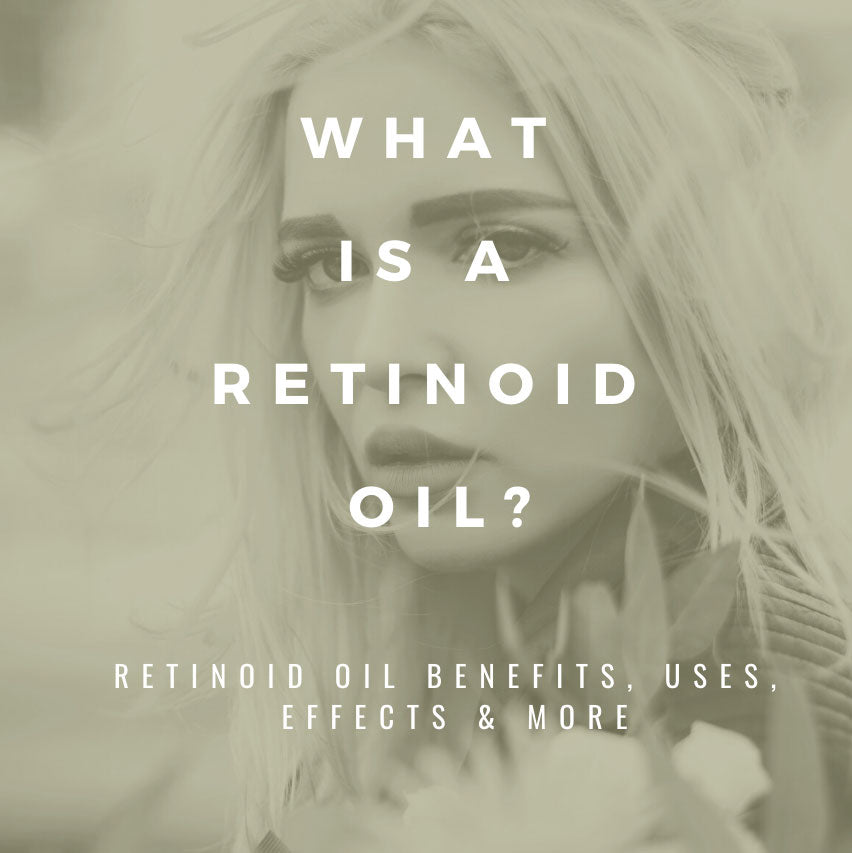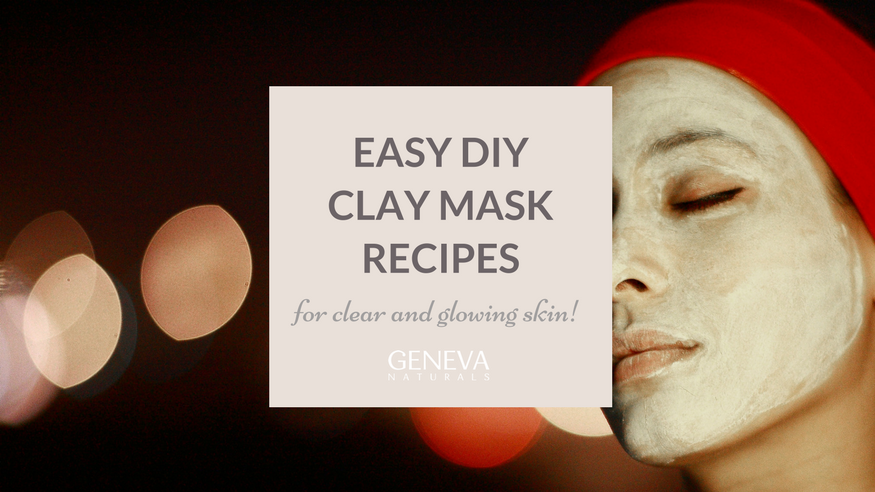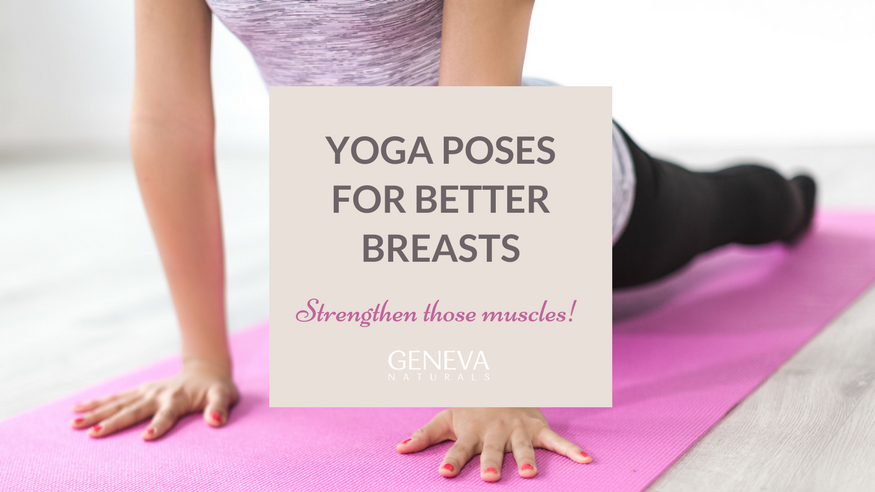Makeup Tips for Acne Prone Skin


You might be great at putting on makeup, but you might still need these makeup tips for acne prone skin. Has this scenario ever happened to you? You wake up one morning to a dull pain on your face. You gasp, rush to the mirror, and see exactly what you were dreading – a pimple. Right on your nose. Or maybe on your chin. Or forehead. Or pimples in multiple places. Wherever your pimple may be, it’s the worst location for a pimple, because everyone can see it! First, you debate popping it. Won’t that just make it go away? But once you’ve talked yourself out of that plan (and for the better, we might add), you just want to hide it. You panic that all anyone will see when they look at you is the newly formed blemish on your face. But instead of hiding from everyone else, should you try to cover it up? Will putting makeup on your pimple or breakout make it worse?
If you’ve ever wondered how to use makeup in a way that won’t make your breakouts worse, and will effectively cover up any impurities on your skin, so have we! So we looked into it. We'll cover how makeup became so popular, whether or not it is good to use when having a breakout, to how to use and apply to acne prone skin effectively, and more. We’ve done the research and are ready to pass it on!
The History of Makeup
Have you ever wondered why we even wear makeup? Where did the trend come from? Well, if you can believe it, the first use of makeup can bet traced to over 6,000 years ago. Talk about historic! The Egyptians were some of the first people to wear it, using lead ore and copper to create their makeup. In the 1600s, women used makeup to create moon and star shaped patches on their skin to cover up those pesky smallpox scars. The history of makeup has come a long way, from women using berries to give their lips color, burnt matches to darken their eyes, and urine to lighten their freckles, to an entire makeup industry with thousands of different products meant to accentuate your features and give you the look you desire.
Makeup is clearly entrenched into our culture, with a history dating back thousands of years. So it’s no wonder that we are so used to the idea of makeup, that it’s part of our society. But, just because the cosmetic industry is huge, doesn’t mean all makeup is created equal. The reality is, some makeup reacts differently to different skin types. With sensitive or acne-prone skin, applying the wrong kind of makeup can cause breakouts to flare up and create real problems for your skin. So what should you do?
Should You Wear Makeup if You Have Acne?
If you have a skin type that is more prone to acne, why wear makeup? Won’t it make your breakout worse?
Before we dive into how makeup reacts to your skin, let’s discuss why you shouldn’t discount using makeup at all during a breakout. The reality is, using something to hide any pimples or other blemish helps us feel good about ourselves. Not having to worry about someone staring at your pimple or blemished skin while you talk? That is a definite advantage! By covering up a pimple, you discover one of the quickest ways you can feel more confident about yourself and your interactions with others during a breakout.

Makeup can also do wonders for your break outs by (somewhat) controlling your hormones. No, there isn’t a special makeup line you can buy that magically regulates the hormones causing breakouts. Rather, breakouts and acne flare-ups can be caused or prolonged by stress. By finding a way to effectively cover up your breakout without making it worse, you reduce any stress or anxiety you may be feeling about your skin. Thus helping the breakout to diminish, and helping you to move on with your daily routine without worrying about your appearance!
Does Makeup Cause Acne?
So, you’ve decided to apply makeup to your face to try and cover up that breakout. But won’t that make my breakout worse, you may be asking? Won’t it cause even more breakouts?
This is a hotly debated topic. Dermatologist don’t even agree, because there are a variety of factors to take into consideration when answering this question. What skin type do you have? What makeup do you use? How are you applying it?
The reality is, if you are prone to acne, you likely have sensitive skin. And sensitive skin requires a different treatment when it comes to makeup application. Certain products and routines for sensitive skin will help control any oily appearance, reduce the breakouts, and help you produce less oil on your face.
But technique makes a difference as well. Applying multiple layers of cover-up to your skin, for example, can cause your pores to clog up, starting even more breakouts. But a light layer can effectively cover up anything you want to conceal.
So does makeup cause acne? Yes and no. If you use the right makeup for your skin type, and you apply the makeup correctly (by not layering it heavily on your face), you’ll not only be able to cover up your breakout, but you won’t have to worry about causing future breakouts – you will have picked the right makeup to help and heal your skin in just the right way!
What Kind of Makeup Should You Use?
If what we’ve described is sounding like your skin type, you’re probably wondering what kind of makeup you should apply to your face. Before we dig into specifics, the key to any kind of good makeup for your skin type is a mineral-based, natural product. Many makeup products contain a variety of chemicals that can wreak havoc on your efforts to have clear skin. By focusing on makeup products that are natural, you’ll be able to both cover up any blemishes and make sure you aren’t contributing to any future breakouts. Even if you can’t buy the truly natural, chemical-free products, try to find products that are as close to mineral-based as possible. The first ingredient should be water. It should also include ingredients like zinc oxide, silica, and titanium dioxide. All of these ingredients help you skin absorb oil and hide any redness without contributing to more breakouts.

When looking for the right makeup to use, take these tips into consideration:
Primer
If you have acne prone skin, you likely struggle with oily skin. (If you do, don't despair! Read some of the benefits here). Which is why using oil-free products will make such a different on your skin. By using an oil-free primer, for example, you’ll give your skin an extra hand in absorbing any excess oil. You’ll get soft and smooth skin, and your makeup will be easier to apply.
Concealer
You can’t just use any concealer on those breakouts. You need a concealer that can easily blend into your skin and cover up those blemishes. Look for a creamy concealer to use on those problem spots. It will easily conceal whatever it is you’re trying to cover up.
Foundation
Not only do you want to look for an oil-free foundation for your skin, but you want to look for an acne-fighting foundation as well. Yes, you read that right. There are foundations that will actually fight your acne while helping to cover it up. Containing ingredients like salicylic acid, they help to minimize your breakout while keeping your face looking smooth and fresh.
Blush
Sure, blush may sound counter-intuitive, what with skin that is likely more red because of a breakout, but a natural blush, after putting on foundation, helps your skin have the color and contour it needs to look fresh and vibrant.
Bronzer
By using the right bronzer, you can actually give your face more definition and a healthy glow. But be sure to stick to a matte bronzer. Otherwise, the shimmery powder of a regular bronzer may highlight the blemishes you’re trying to cover up.

Oil papers
Have you ever used an oil blotting paper before? If not, they may just be your new best friend. Toward the end of the day, the oil on our skin can really start to come through, making our skin look shiny and, of course, oily. Having some of these handy will keep your face and makeup looking fresh.
How to Apply Makeup to Acne Prone Skin
Now that you know what kind of products to look for, how do you apply the makeup correctly to get the look you want? If you do it right, your makeup will help you look polished, not like you’re purposely trying to hide something with layers of makeup. The key to covering up a breakout is the idea that less is more. The less you put on, the brighter your skin will look, and the more concealed your blemishes will be!
First, start by washing your skin. Having clean skin before applying makeup will guarantee there isn’t any dirt or other impurities on your skin. This helps to prevent any future breakouts. If you don’t cleanse your face before, you’ll be trapping any of those impurities against your skin with the makeup, clogging your pores, possibly creating more acne while you are working to cover up any blemishes!
1. Moisturizer
Apply some moisturizer with SPF to your skin about 5 minutes before putting on your foundation. We love this step - we’re all about moisturizing (let’s keep that skin looking young!). Aside from the anti-aging benefits, moisturizing will help your skin to be more supple, and will set the foundation after you apply it, helping it to stay on your skin.
2. Foundation
Make sure you find a light foundation that both matches your skin tone and contains more natural ingredients. When you apply the foundation, keep the application light. A thick application won’t cover up breakouts or blemishes as effectively.
3. Concealer
After applying a thin layer of foundation, use your concealer to go back over your acne to cover up whatever is still visible from the foundation application using a concealer brush. If your blemishes are more red, try using a green concealer underneath your regular concealer to cover any blemish effectively.
4. Powder
Use powder to set the makeup, focusing your application on the oily parts of your skin, keeping the parts of your skin that don’t struggle with oil free of any unneeded makeup. If using blush, brush a light layer over your cheeks.

5. Eyes
Bring attention to your eyes by only using a light layer of eyeshadow. Use a more neutral color (bronze eyeshadow for darker skin, champagne for light skin, for example) and apply that color on your top lid and inside the corners of your eyes. Once blended, your eyes will look awake and refreshed. Apply some mascara.
6. Lips
Lastly, apply some of your favorite lip gloss or more neutral lipstick to finish off the look.
At the end of the day, wash your face again. Leaving makeup on for longer than needed (especially when going to bed), can clog your pores as well, creating even more breakouts!
Following these application techniques, you’ll find you have not only effectively covered up your acne, but you’ve also drawn attention away from that acne by accentuating other features on your face. You will look polished and refined, and not have to worry about a breakout being too noticeable.

So there you have it – everything you need to know about applying makeup to your acne-prone skin. Don’t let the myths fool you. If you use the right makeup and apply it in the correct way, your makeup won’t contribute to your breakouts. It will make your skin look fresh and smooth, it will make you feel more confident in your look, and, depending on what kind of makeup you buy, it will even work to clear the acne on your skin! Try out these tips and tricks today, you won’t be disappointed!
Also in Geneva Naturals

What Is A Retinoid Oil? Retinoid Oil Benefits, Uses, Effects & More

DIY Clay Mask Recipes for Clear Skin


